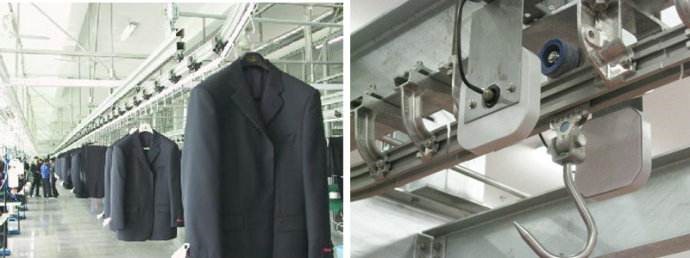UHF RFID technology(with RFID tags, RFID readers) can help to increase the management efficiency in garment manufacturing. RFID helps to keep track of every garment to improve the efficiency of inventory management.
RFID Garment Tracking
With the rapid development of the Internet of Things(IOT) technology, radio frequency identification technology (RFID) has achieved great success in the production process in various fields. RFID technology has been used more and more widely in garment management.
The RFID automatic identification technology is introduced in the clothing production process to track the entire producing process, and provide a real-time and accurate production and operation information, which provides the strong support for the rapidly changing market situation. China is the world’s largest consumer and producer of clothing.
With the rapid improvement of people’s living standards, the clothing industry has always been a very hot industry. RFID technology will improve the management and production efficiency in the clothing industry.
The clothing industry itself has many characteristics: seasonality, regional differences, market changes, product types, etc. The problem of the enterprises is that the management system is incomplete and the market competition is fierce.
The clothing industry also has its special industry characteristics: product style, color, size and other characteristics that determine the quantity of clothing with the increase in style and show a geometric growth trend, the sales system covers direct sales, wholesale, franchising and other industries. The clothing industry is limited by its own and industry defects, and its future development has also encountered a bottleneck.

With the development of RFID technology, more and more companies now begin to learn and use RFID solutions. There are many advantages to use RFID:
(1) Flexible production: Based on the data collected by RFID technology, the real-time production management system monitors and adjusts the production line to achieve JIST management;
(2) Real-time monitor product quality: timely feedback and tracking of production information based on RFID technology ensures real-time analysis and processing of production quality, which improves the production quality, and reduces unnecessary waste;
(3) Save production costs: RFID helps to reduce enterprise inventory, production time and labor costs;
Components of RFID system
The intelligent terminal design of this system includes four parts: CAN bus interface part, radio frequency identification part, LCD display and keyboard input part, digital input and output parts, . The detailed description is as follows:
CAN bus interface part: Receive the command from the master, and send the corresponding action signal according to the communication protocol (drive the electric control part to perform the corresponding action), and also send information to the master according to the received command or the set program.
Radio frequency identification part: It can identify the smart hanger tags under movement on the assembly line. In addition, what is more important is that the RFID reader can read not only the data of the RFID tag, but also write the data repeatedly through the reader.
LCD display and keyboard input section: The terminal has human-computer interaction function, with LCD display and keyboard input section, digital input and output, and can set the required parameters or display the indication status. It should also be able to display the upper computer and console And information from smart hangers.
RFID technology enables industry brands to efficiently manage supply chains, retail management, and internal management of enterprises, enabling rapid scanning and reading of products in all links. And create products from raw materials to semi-finished products, finished products, transportation, storage, distribution, shelves, sales Control of real-time data collection.
And even return processing, and constantly establish a safe and reliable management mode, which effectively helps enterprises to build a low-cost and efficient supply chain operation system.